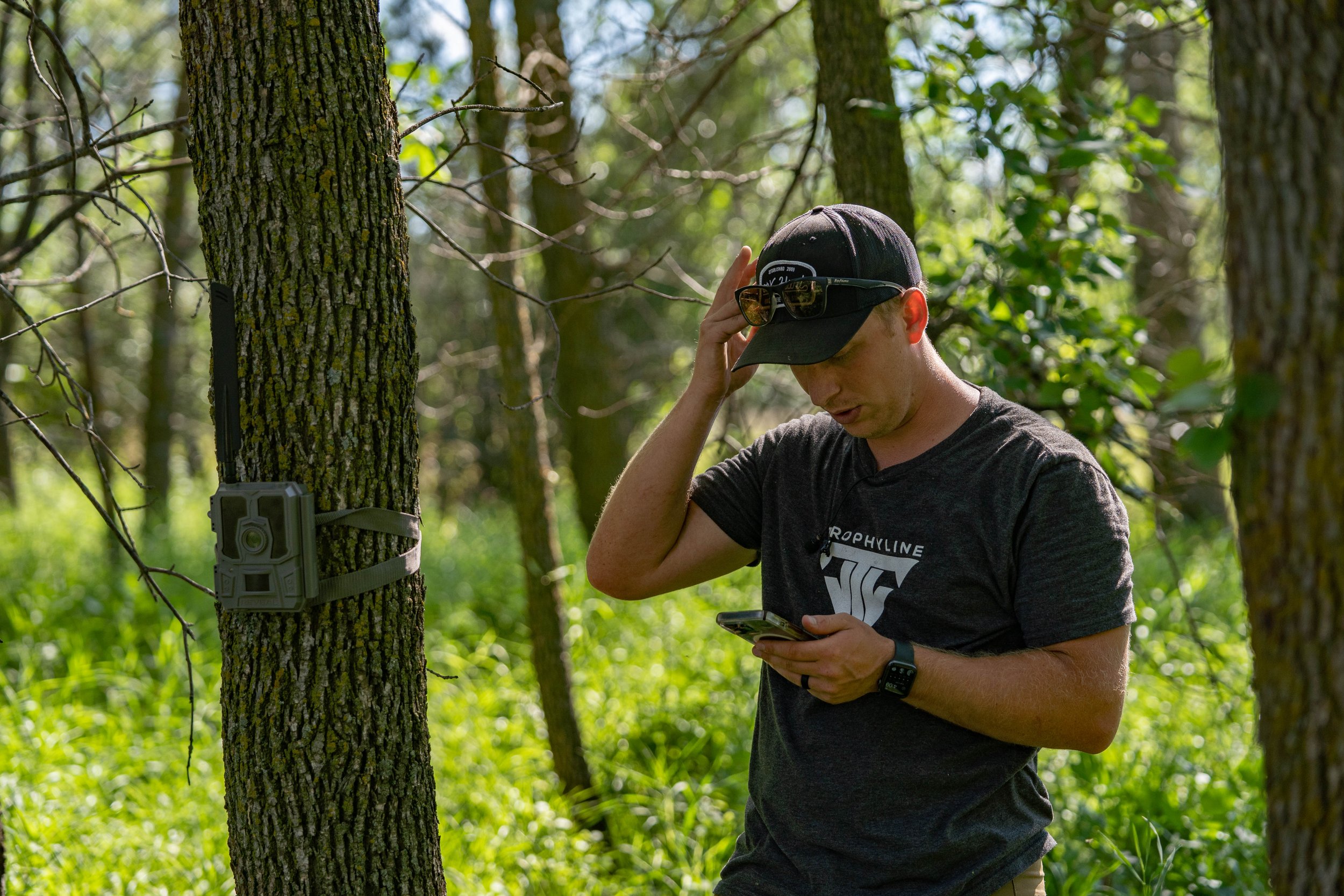By Alex Comstock
Hunting big woods bucks can present quite the unique challenge. There's a reason people travel to the true midwest to hunt big whitetails, and that's not only because they get bigger in cornfed country, but they are easier to hunt as well. I've hunted mainly in three states during my lifetime. Minnesota (northern region), North Dakota, and Nebraska. In North Dakota and Nebraska, deer in general are more predictable and it doesn't take as much work to look at a map and guess how they are going to move. I'm not saying it's easy, but there's an added challenge trying to arrow a mature buck in thousands of acres of hardwood forests. This coming season I'll be spending more time in the Northern Minnesota big woods than I ever have, and here's three things I'm keying in on during my scouting efforts and what you could be too if you hunt in a big woods setting.
What's Around To Eat?
Just as you do in agricultural areas, an important part of the puzzle when deer hunting in the big woods is locating the preferred food source in the area. Instead of a bean or cornfield though, it may not be as cut and dry. What I've found in the past is if you can locate oak trees that produce acorns, odds are it's going to be torn up with deer sign in and around those oaks. If you are out this time of year and locate an oak flat or even a single oak tree, check out the ground to see if you can see any old acorns from the previous year. You may not be able to tell this time of year if an oak tree will be holding acorns in the fall, but it would be worth noting and coming back to.
Another food source that can be a straight gold mine is if you can locate an apple tree. I've got a couple friends that have found groups of apple trees in seemingly the middle of nowhere while scouting, and let's just say those areas have produced some pretty cool hunts. Other food sources could be any type of natural browse, old logging roads where natural clover grows, year old clear cuts or anything of that nature. The biggest thing is to get boots on the ground and figure out to the best of your ability what deer are using as a major food source. Once you figure that out, and combine it with the next important topic, you should be making good strides.
Find Where Mature Bucks Bed
As I get more and more into big woods hunting for mature bucks, I feel as though the key to it all will be bedding. Figuring out those key bedding areas in the spring is going to be vital to my success and if you can identify these places, you can then make a game plan around that, knowing where bucks will be getting up and heading to feed from bed or vice versa.
Locating travel areas between food and bed can be a vital part of the puzzle as well.
In order to figure out where mature bucks are bedding, it's important to know what to look for. It all depends on what type of habitat and terrain you're hunting. Are you hunting hill country, swampy areas, dense or mature forest? Based on what type of terrain you're hunting, you can better identify where bucks might be bedding. There are some general basics such as identifying small islands in big swamps in swampy areas, the right thermal cover in dense hardwood forests, understanding ridges and valleys in hill country etc. I'm not going to go into major detail here as one could go on and on about buck bedding in the big woods. Long story short - when it comes to scouting, figure out where bucks are bedding, and work backwards from that.
*If you want to learn more about buck bedding, be sure to check out content from The Hunting Public or The Hunting Beast.
Boots on The Ground is Important
This should be pretty self explanatory, but I think it's more important in a big woods setting than it is anywhere else. For comparison's sake, let's once again take the classic midwest vs. big woods. In a true midwest setting, you can map scout on your computer, and note where a crop field is, maybe do a drive on the backroads, go glassing, etc. Boots on the ground is still important, but there are a variety of other ways to scout as well. In most big woods settings, there is no such thing as going for a drive around the backroads to scout and check out the property or go glassing. A lot more hinges on getting your boots on the ground and putting on miles.
You could identify what you think is a clear cut on a map, but how old is it? By getting boots on the ground you'll figure it out. I could go on and on about other scenarios like this, but I feel as though it's simply more important to spend time walking in a big woods setting. If you don't spend much time physically walking around in the off-season scouting, it'll be harder to be successful.
Conclusion
Like I said in the opening paragraph, hunting the true big woods is no joke. There's a reason less people are successful harvesting mature bucks in the northern region of Minnesota, Wisconsin, Pennsylvania, etc. But that doesn't mean it can't be done. It all starts with scouting, and these three things are what I find especially important.
Do you hunt the big woods? Leave a comment letting me know where and one thing you are looking for when scouting!

































